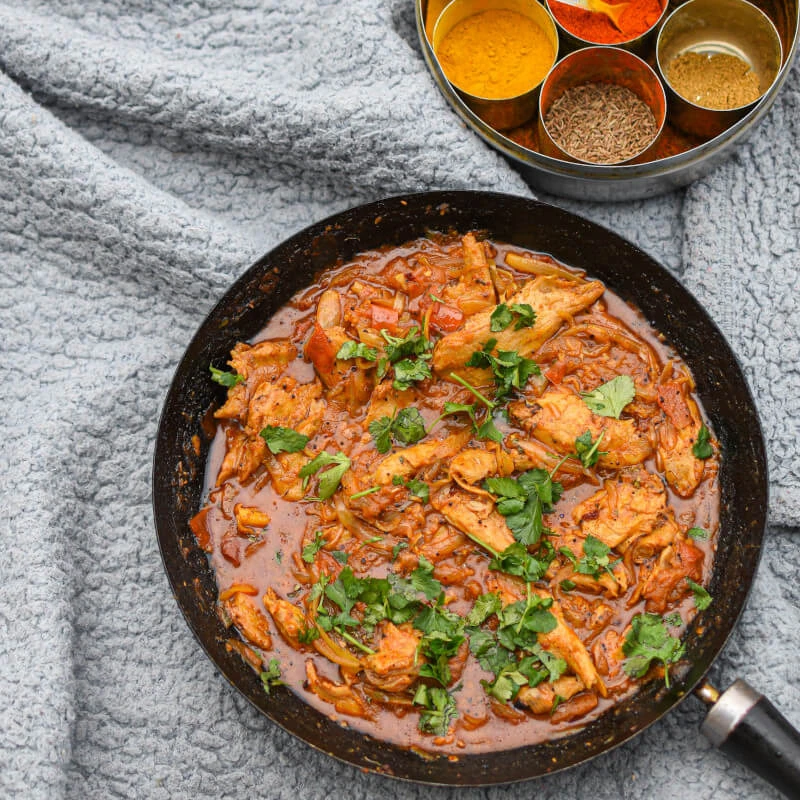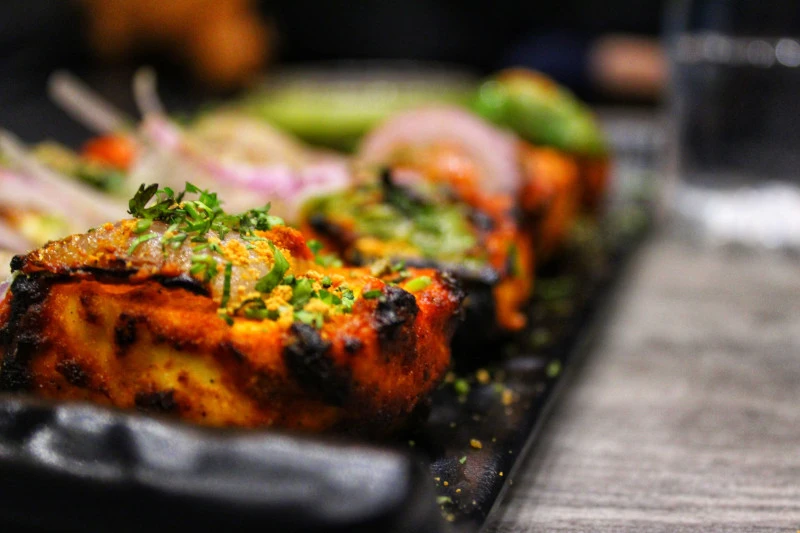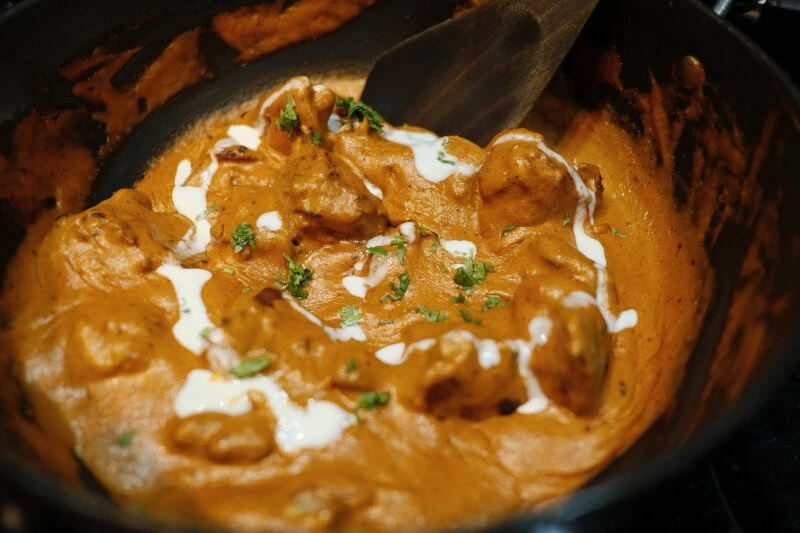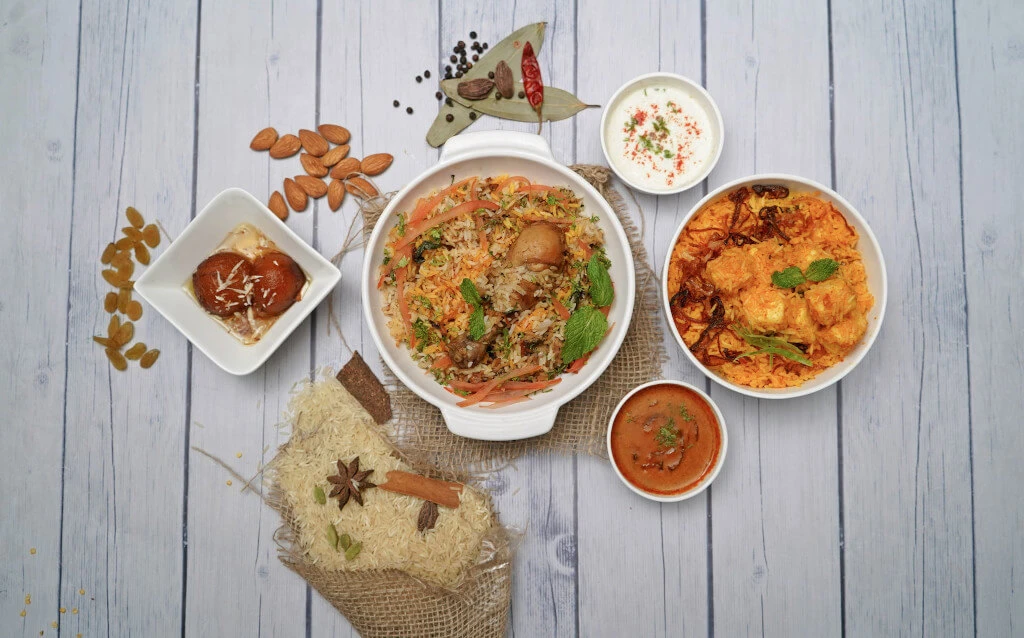Whisky and Indian food, at first, might seem like an unlikely pairing. The robust and deep flavors of whisky juxtaposed with the rich, layered tapestry of Indian cuisines can raise eyebrows. However, if one delves deeper, this pairing reveals a symphony of tastes, waiting to be discovered. The key lies in understanding the nuances of both.
The Foundation of Flavors
Indian food is celebrated for its vast range of flavors – spicy, sweet, tangy, and umami. Whiskies too, depending on their region and maturation process, can offer smoky, woody, fruity, or even floral notes. When you break it down, the complexity of both whisky and Indian dishes provides a plethora of pairing possibilities.
Spicy Curries and Bold Whiskies

For those fiery dishes like vindaloo or spicy chicken tikka masala, you’ll need a whisky that can hold its own. A whisky with a high ABV (alcohol by volume) and robust profile, like a cask-strength Scotch or a spicy bourbon, complements the spice, rather than being overshadowed by it.
Milder Dishes and Gentle Whiskies
Gentler dishes like butter chicken, korma, or saag paneer demand a subtler touch. Whiskies that offer light floral or fruity notes, such as a Glenmorangie Original or a Japanese single malt, can synchronize beautifully with these creamier dishes.
Grilled Delicacies and Smoky Whiskies

Tandoori items, with their charred exterior and juicy insides, are a hallmark of Indian cuisine. These grilled delicacies harmonize exceptionally well with smoky whiskies. Consider an Islay Scotch with its peaty undertones or a mesquite-smoked American whiskey to mirror the char of the grill.
Vegetarian Dishes and Versatile Whiskies

Indian cuisine is also renowned for its array of vegetarian dishes. Lentil-based recipes like daal, or vegetable curries, are incredibly diverse. A versatile, middle-of-the-road whisky such as a Highland Scotch or a balanced rye whiskey can pair with a multitude of vegetarian options.
Sweets and Whiskies with a Finish
Indian desserts like gulab jamun, kheer, or jalebi are rich and sweet. Instead of overpowering them with a similarly sweet whisky, aim for those with a long, evolving finish. A sherry-finished Scotch or an aged bourbon with hints of caramel and vanilla can be the right fit here.
Pairing Tips and Tricks

- The Importance of Taste Testing: When you decide to embark on the adventure of pairing, first impressions matter. By conducting a taste test, you’re essentially previewing the symphony of flavors that await. It ensures a harmonious experience where the whisky and dish dance together, instead of one leading and the other trying to keep up. Remember, the goal is a union of flavors, not a battle.
- Unlocking Whisky’s Potential with Water: It might seem counterintuitive to add water to your whisky, especially if you’ve spent a fair amount on it. But trust in the process. Water, especially when added drop by drop, has the potential to release hidden aromas and flavors in your whisky. It can sometimes tone down a particularly robust whisky, making it more palatable and a better match for a subtly flavored dish. With the myriad of flavors in Indian cuisine, this tweak can be your secret weapon in perfecting a pairing.
- The Neat Approach: Cocktails have their charm, but when paired with the complexity of Indian food, the direct flavors of a neat whisky can be a game-changer. When you serve your whisky neat, you allow its authentic taste to shine, making it easier to discern how well it complements the Indian dish in question. It’s like listening to an acoustic version of a song; it’s raw, unfiltered, and pure.
- Why Temperature is Key: Indian food is known for its warmth, both in terms of spice and actual temperature. Pairing a cold whisky with a warm dish can be jarring, interrupting the flow of flavors on your palate. Serving whisky at room temperature ensures that its spectrum of flavors is available in full force. Just as cold can numb your fingers, it can also numb the intricate notes in your whisky, making them less discernible.
Now that we have discussed the different pairings you can look into and assist these pairings with the key tips for enhancing your Indian food and whiskey pairings, we want to guide you through some alternative concepts of pairing. By understanding these, you can better appreciate the harmonies and occasional dissonances that make the act of pairing an evolving adventure.
The Spice Trail: Bold vs. Subtle
- Bold Flavors: Consider a dish like the fiery ‘Vindaloo’ or the rich ‘Rogan Josh’. Such dishes demand a whisky that can hold its own. Here, you might lean towards a robust Islay Scotch with its peaty, smoky flavors. It’s the same as matching fire with fire, ensuring neither the dish nor the drink overwhelms the other.
- Subtle Delights: Dishes like ‘Saag Paneer’ or ‘Kerala Moilee’ have a milder, creamier profile. A light Speyside Scotch or a well-aged Bourbon, with its subtle notes of vanilla and caramel, would be a delightful companion, allowing you to savor the delicate dance of flavors without one overshadowing the other.
The Texture Game: Crunchy vs. Creamy

- Crunchy Bites: Snacks like ‘Samosas’ or ‘Bhajis’, with their crispy exteriors, can be elevated with a whisky that has a slight bite – maybe a younger Rye whisky. Its spicy kick complements the crunch, resulting in a balanced experience.
- Creamy Richness: For creamy dishes such as ‘Butter Chicken’ or ‘Malai Kofta’, an older whisky with a smooth, velvety finish, like a well-aged single malt, will mirror the dish’s creamy texture, making every bite and sip feel like a harmonious waltz.
Regional Pairings: North vs. South
- Northern Extravaganza: Northern Indian dishes, known for their thick gravies and generous use of dairy, pair wonderfully with richer whiskies. Think ‘Biryani’ with a sherried whisky. The dried fruit and nutty notes of the whisky resonate with the aromatic spices of the Biryani.
- Southern Serenade: Southern Indian dishes, often lighter with a generous use of coconut and tamarind, might be better paired with a fruit-forward whisky or even a Japanese whisky with a hint of umami. This combination enhances the tangy, tropical flavors typical of South Indian cuisine.
Incorporate Whisky into Cooking
To take the pairing to another level, consider introducing whisky into the cooking process. A splash of whisky can enhance a marinade for meats, or it can be flambéed with certain dishes to introduce a smoky undertone.
Marrying the world of whisky with the intricate flavors of Indian cuisine is more than just a gourmet exercise. It’s about understanding, appreciating, and celebrating the depths and diversities of two time-honored traditions. By giving careful thought to your selections and being open to experimentation, you can unlock pairings that complement and elevate each other.

